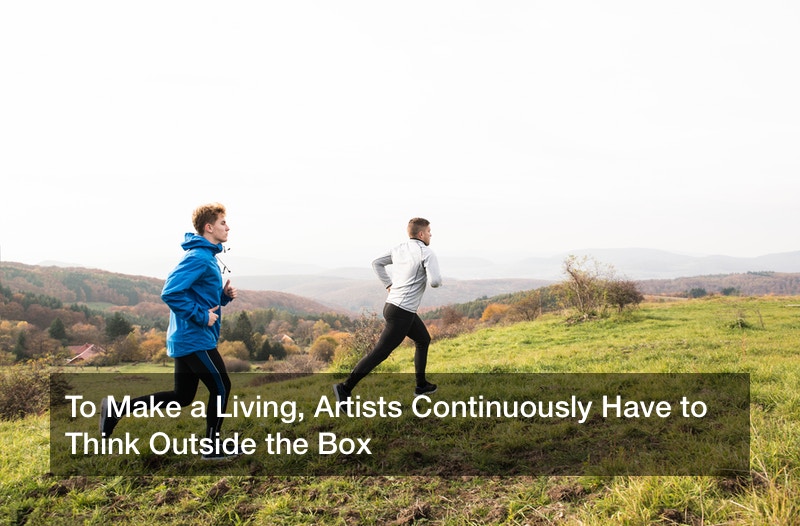To Make a Living, Artists Continuously Have to Think Outside the Box


 The global art market was valued at almost $64 billion in 2017. Despite the fact that our society tends to undervalue art, most people experience positive emotions when they’re around it. In fact, 94% of survey respondents believe that art makes their workplace more welcoming, with 61% saying that it also stimulates their creativity. But if art is your job, your creativity is likely being used 24/7. Your passion requires you to think outside the box, of course. And if you’re trying to make a living as a freelance artist, you’ll have to be innovative pretty much all the time.
The global art market was valued at almost $64 billion in 2017. Despite the fact that our society tends to undervalue art, most people experience positive emotions when they’re around it. In fact, 94% of survey respondents believe that art makes their workplace more welcoming, with 61% saying that it also stimulates their creativity. But if art is your job, your creativity is likely being used 24/7. Your passion requires you to think outside the box, of course. And if you’re trying to make a living as a freelance artist, you’ll have to be innovative pretty much all the time.
Take Stephen Maxam, for example. The 21-year-old Minnesota artist, known in the local community by his Instagram handle, @staxamart, has made a name for himself by using an unconventional material in his work: epoxy. Made up of epoxy resin and a curing agent, epoxies are typically used as a protective coating for concrete floors. But Maxam uses epoxy to create captivating pieces in a way that hasn’t really been seen in the art world.
The self-titled “abstract naturalist painter” has essentially had to figure out this method on his own, as there isn’t much information available on the materials he uses.
“I discover new things every time I use it, and anytime I try something new I usually find a new effect,” he says. “A lot of things are accidental.”
But that doesn’t mean he isn’t dedicated to his craft. Maxam spends anywhere from 20 to 50 hours a week in his self-ventilated studio. His work is currently on display at a local establishment, the Urban Growler Brewing Company, and he hopes to feature his work in galleries, create his own furniture, and someday have his own solo show.
“You, as the creator, have a certain amount of power over the composition, but only a certain amount,” Maxam says of his medium. “You’re guiding it, but also being influenced by the path it takes.”
But if you’re trying to make it as an independent artist, you may have to take charge a little more consistently.
Experts say that above all else, you should give yourself a big financial and emotional safety net. Six months’ worth of savings should be your minimum. If you have a day job or intend to work in a field like graphic design or illustration, many freelancers recommend you utilize your evenings and weekends to build up your portfolio and client base. At the very least, you should be creating and making contacts during your “free time.”
Freelance artists should also remember that even though art is their passion, it’s not simply a hobby. All work has value, and that starts with the value the artist gives their own work. Although some clients may try to take advantage of this, artists need to remember to always provide written contracts and drive the point home that they don’t ever work for free. While figuring out what to charge can be a difficult balance, undervaluing your time and skills is a critical mistake that’s hard to rectify.
Whether you’re just starting out in the art world or have already made a bit of a name for yourself, a creative path is never going to be easy. But those who are willing to constantly use an unconventional approach are more likely to succeed.